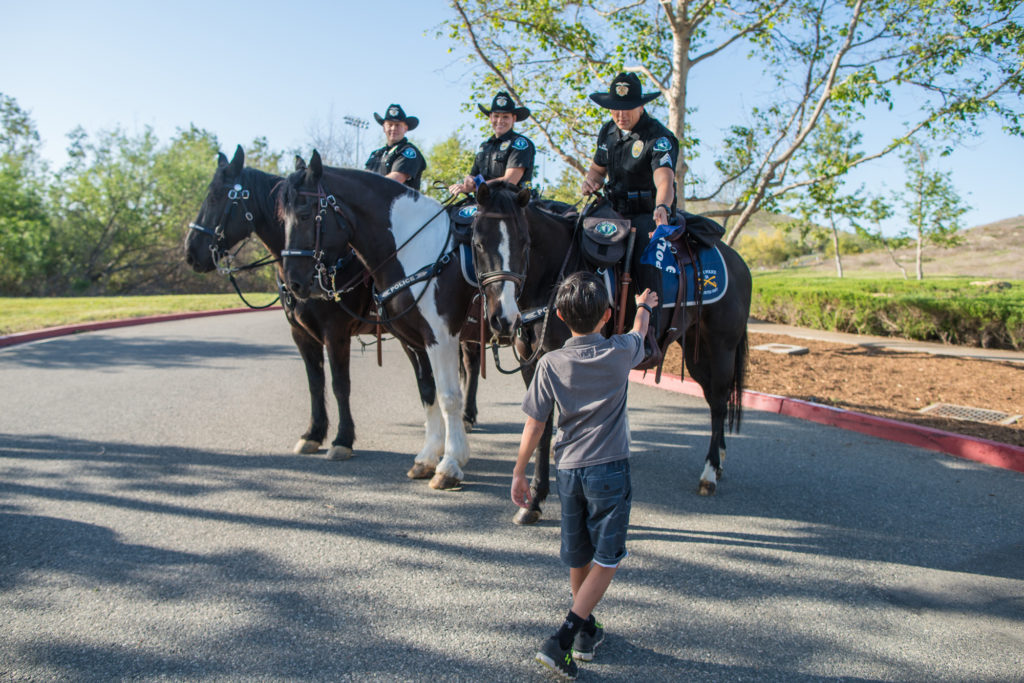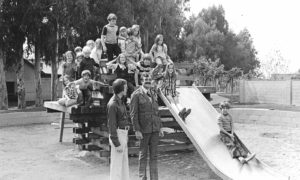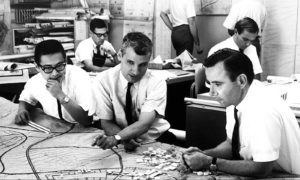
Irvine has been named America’s safest city of its size for 12 straight years. Why?
One answer lies in a second floor classroom of the Irvine Police Department. Each week, 27 citizens gather here for a class called “Community Police Academy,” a unique opportunity to talk to crime scene investigators, K-9 officers, crisis negotiators and, on this night, Police Chief Mike Hamel.
“If you look on the side of our police cars,” Hamel tells the class, “it says: In partnership with the community. That’s been our motto in Irvine forever. Because we realize we can’t do our jobs without your help.”
Irvine police hold events like “Coffee with a Cop” and “Pizza with a Cop” to mingle with residents.
They place officers in all the schools to connect with the city’s youth. And they work with more than 3,000 volunteers. “We are reliant on the public to call us when they see something amiss in the neighborhood,” Chief Hamel says. “The more they trust us, the more likely they will be to call us.”
Class member Marcel Pufal, a PhD student at UC Irvine studying emergency preparedness, believes Irvine’s history also plays a role.
“I think it has a lot to do with how Irvine was created,” he says — “with the Master Plan.”
A balanced city is a safe city
You might not associate planning with safety, but the connection is strong.
“Drive down any street in Irvine and you see a vibrant, clean, well-maintained community,” says former FBI agent Steve Gomez, now chief executive of B2G Global Strategies. “That’s a major deterrent to crime.”
Security experts refer to this as the “Broken Windows Theory.” It’s based on the premise that broken windows attract crime, whereas well-maintained homes, shops and parks attract engaged citizens who prevent crime — due to civic pride.
How does planning fit in?
Irvine was master-planned to create a city that instills civic pride. That includes nationally recognized parks to relax, nationally recognized schools to educate children, and nationally recognized business centers to employ adults.
The city’s retail centers alone provide $64 million annually, or one third of the city budget, to help keep the city in balance — in other words, to prevent broken glass.
“One reason Irvine is safe is how well-planned it is,” Chief Hamel says.
And then there is teamwork.
The character of Irvine
FBI crime statistics show that safe cities, like Irvine, have thriving economies, educated citizenry, and cooperation among police, the public and city leaders. Irvine scores high in all areas. Here’s how police, the public and city leaders coordinate in Irvine.
Police: Irvine Police create a unique culture by emphasizing college-educated recruits, continuous training and character.
“I seek to hire people who have a true sense of service and a true selfless disposition,” Hamel says. “Once I find good people, then we train them to the nuts and bolts of the job, so we end up with people who become integrated into the existing culture of service and community policing.”
Public: The purpose of Irvine’s community policing is to engage the public and earn its trust. That’s why they have an equestrian unit and offer classes like the Community Police Academy — to connect with people.

“Our citizens are really engaged,” Hamel says. “They’re concerned about the quality of life in their villages, and they don’t hesitate to call us if they see anything suspicious.”
City Leaders:
Irvine’s city leaders have offered strong support for law enforcement for years.
“Public safety has always been a priority for our city leaders,” Hamel says. “They provide us with the resources, personnel and tools to offer the highest level of service to the public. And we do.”
Hamel points out, “It’s the police officers, the community — including the Master Plan — and city leaders that all contribute to Irvine being the safest city of its size in America.”
The Community Police Academy is offered twice a year for adults and once each summer for teens. Learn about Irvine Police Dept. programs and services at IPD.org









